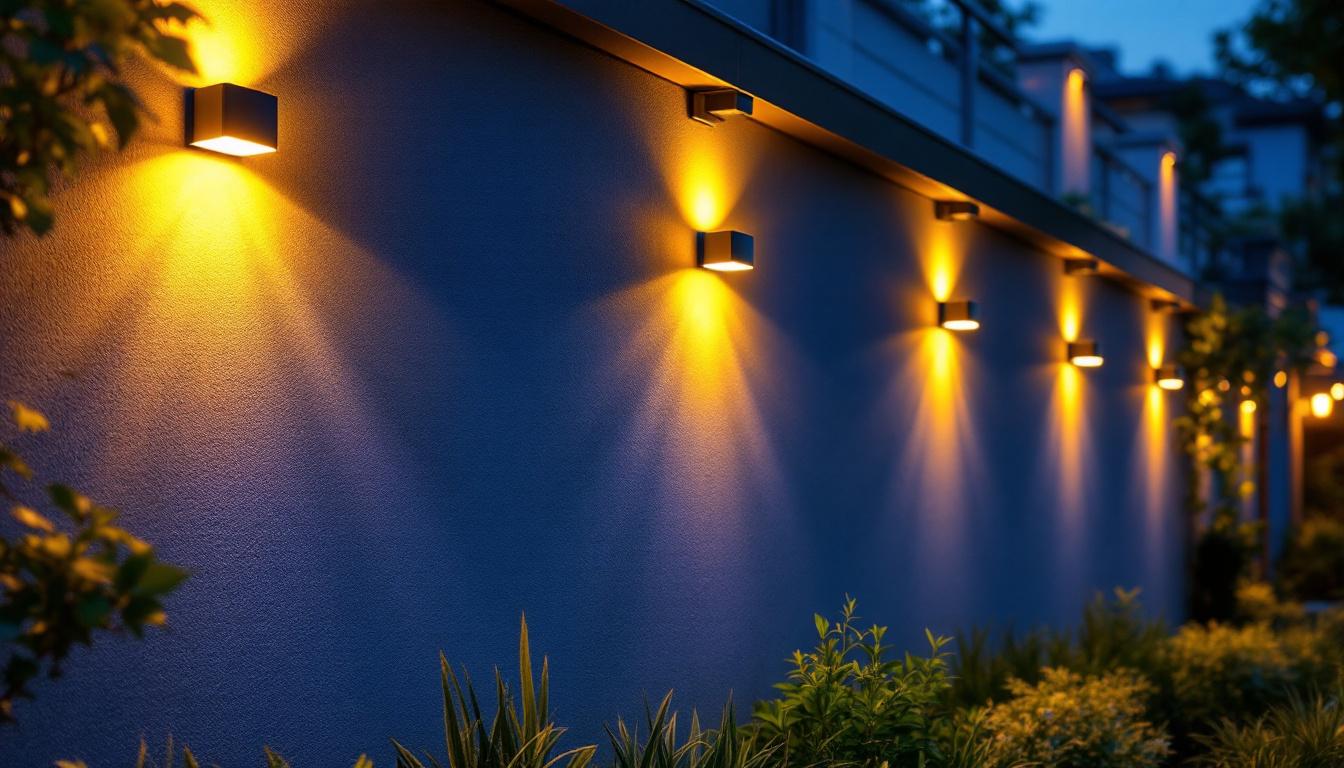
Outdoor motion sensor lights have become an essential component in modern lighting design, especially for residential and commercial properties. These lights not only enhance security but also improve visibility and energy efficiency. For lighting contractors, understanding the intricacies of these devices is crucial for delivering optimal solutions to clients.
Motion sensor lights operate using various technologies, primarily passive infrared (PIR), microwave, and dual technology. Each type has its own set of advantages and applications, making it vital for contractors to choose the right one based on the specific needs of the project.
Passive infrared sensors detect changes in infrared radiation, which is emitted by moving objects, typically warm bodies. These sensors are ideal for most residential applications due to their reliability and cost-effectiveness. They work best in areas with a clear line of sight, as obstructions can hinder their performance. Additionally, many PIR sensors come with adjustable sensitivity settings, allowing homeowners to customize the detection range according to their specific needs, such as avoiding false triggers from pets or small animals.
Microwave sensors, on the other hand, emit microwave pulses and measure the reflection off moving objects. They can cover a larger area and are less susceptible to environmental conditions, making them suitable for larger commercial spaces. These sensors can penetrate through walls and other obstacles, which allows them to detect motion even in complex environments. However, their sensitivity can sometimes lead to unintended activations, particularly in areas with a lot of movement, such as busy parking lots or pathways. To mitigate this, many microwave sensors offer adjustable settings to fine-tune their responsiveness.
Dual technology sensors combine both PIR and microwave technologies, providing enhanced detection capabilities and reducing false alarms. This makes them an excellent choice for high-security areas. By requiring both technologies to be triggered simultaneously, dual technology sensors can significantly minimize the risk of false alarms caused by environmental factors like wind or small animals. Furthermore, these sensors often come equipped with advanced features such as programmable timers and dimming options, allowing users to tailor the lighting experience to their preferences and needs. This level of customization not only enhances security but also contributes to energy savings by ensuring lights are only active when necessary.
When installing outdoor motion sensor lights, several key considerations must be taken into account. Proper installation not only ensures functionality but also maximizes the lifespan of the equipment.
First, the placement of the sensors is critical. They should be positioned to cover the intended area without obstructions. This includes avoiding direct exposure to sunlight, which can cause false triggers, and ensuring that the sensors have a clear line of sight to detect motion effectively.
The height at which the motion sensor lights are installed can significantly impact their effectiveness. Typically, a height of 6 to 10 feet is recommended, as this range allows for optimal detection while minimizing the risk of vandalism. Additionally, the angle of the sensor should be adjusted to cover the desired area without overlooking potential blind spots.
Contractors should also consider the environment in which the lights will be installed. Areas with heavy foliage or frequent animal movement may require adjustments to the sensitivity settings to prevent false alarms. Furthermore, it’s beneficial to conduct a test run after installation to observe how the lights react to movement in their designated zones. This allows for fine-tuning of both the height and angle to achieve the best performance.
Another essential aspect of installation is ensuring a reliable power supply. Outdoor motion sensor lights can be hardwired or powered by batteries. Hardwiring provides a more permanent solution, while battery-powered lights offer flexibility in placement.
For hardwired installations, contractors should use weatherproof junction boxes and ensure that all connections are secure and protected from moisture. This not only enhances safety but also extends the lifespan of the lighting system. Additionally, it’s important to consider the type of wiring used; opting for outdoor-rated cables can help prevent deterioration due to exposure to the elements. In cases where battery-powered lights are preferred, choosing high-quality batteries with a longer life can reduce maintenance frequency and ensure consistent performance.
Moreover, it’s wise to think about the overall design and aesthetic of the installation. Motion sensor lights come in various styles and finishes, allowing homeowners to select options that complement their property’s architecture. Integrating these lights into landscaping or architectural features can enhance both security and curb appeal. For instance, placing lights near pathways or entry points not only illuminates these areas for safety but also creates an inviting atmosphere during nighttime hours.
Selecting the appropriate motion sensor light involves evaluating various factors, including brightness, beam angle, and additional features. Contractors should be well-versed in these aspects to guide their clients effectively.
Brightness is typically measured in lumens, and the required brightness will depend on the specific application. For security purposes, a higher lumen output is generally recommended to ensure visibility in darker areas.
The beam angle of a motion sensor light determines how wide an area it can illuminate. A wider beam angle is beneficial for larger spaces, while a narrower beam angle may be more effective for targeted lighting in smaller areas. Contractors should assess the layout of the property to recommend the best option for their clients.
Additionally, the coverage area of the motion sensor is crucial. Most lights offer a detection range between 30 to 100 feet, and this range can vary based on the type of sensor used. Understanding the specific needs of the property will help contractors make informed decisions.
In today’s tech-savvy world, many outdoor motion sensor lights come equipped with smart features. These may include smartphone connectivity, adjustable sensitivity settings, and integrated cameras. Such features not only enhance security but also provide convenience for homeowners.
Contractors should stay updated on the latest technologies and trends in smart lighting to offer clients the most advanced solutions. This knowledge can set them apart from competitors and enhance customer satisfaction.
One of the primary maintenance tasks involves cleaning the sensors and lenses. Dust, dirt, and debris can obstruct the sensor’s ability to detect motion effectively. A simple cleaning routine can significantly improve performance and reduce false alarms.
Over time, environmental changes may affect the sensitivity settings of motion sensor lights. Contractors should recommend that clients periodically check and adjust these settings to ensure optimal performance. This is particularly important in areas with seasonal changes, where foliage growth can impact detection.
Additionally, clients should be informed about the importance of testing the lights regularly. A simple test can reveal any issues with the sensors or bulbs, allowing for timely repairs or replacements.
Common issues with outdoor motion sensor lights include false alarms, inconsistent lighting, and complete failure to activate. Contractors should be prepared to troubleshoot these problems effectively. For instance, false alarms can often be resolved by adjusting the sensitivity settings or repositioning the sensors.
Inconsistent lighting may indicate a need for bulb replacement or issues with the power supply. Contractors should provide clear guidance on how to address these common problems, ensuring that clients feel supported and informed.
Outdoor motion sensor lights play a pivotal role in enhancing security for residential and commercial properties. By illuminating dark areas and deterring potential intruders, these lights serve as a first line of defense.
Contractors should emphasize the importance of strategic placement when discussing security measures with clients. Areas such as driveways, entrances, and backyards are prime spots for motion sensor lights, as they provide visibility and peace of mind.
For clients seeking comprehensive security solutions, integrating motion sensor lights with other security systems can be highly effective. This may include connecting lights to security cameras, alarms, or smart home systems.
Such integration allows for real-time monitoring and alerts, enhancing the overall security framework. Contractors should be knowledgeable about various integration options to provide clients with tailored solutions that meet their specific needs.
Educating clients on the proper usage of outdoor motion sensor lights is essential for maximizing their benefits. This includes explaining how to adjust settings, test the lights, and understand the functionality of smart features.
Providing clients with a user manual or a quick reference guide can be beneficial. This not only empowers clients but also fosters a sense of trust and professionalism in the contractor-client relationship.
Outdoor motion sensor lights are a valuable addition to any lighting project, offering security, convenience, and energy efficiency. For lighting contractors, understanding the various types, installation best practices, and maintenance requirements is crucial for delivering high-quality solutions to clients.
By staying informed about the latest technologies and trends, contractors can enhance their service offerings and build lasting relationships with clients. Ultimately, a well-executed motion sensor lighting solution can significantly improve safety and satisfaction for homeowners and businesses alike.
Ready to elevate your lighting projects with the best outdoor motion sensor lights on the market? At LumenWholesale, we provide lighting contractors like you with the highest quality, spec-grade lighting products at prices that can’t be beaten. Say goodbye to local distributor markups and hello to our extensive selection that meets rigorous industry standards. Plus, with free shipping on bulk orders, you can stock up on premium lighting solutions without worrying about hidden fees. Make the smart choice for your business and visit LumenWholesale today for Wholesale Lighting at the Best Value.

Discover essential insights for lighting contractors in our comprehensive guide to Online LED Superstore.

Explore how island light fixtures are transforming the approach of lighting contractors, enhancing both aesthetics and functionality in modern projects.

Discover the ultimate checklist for lighting contractors working with COB LED lights.

Discover how exterior wall LED lights can boost your lighting project efficiency by up to 30%.